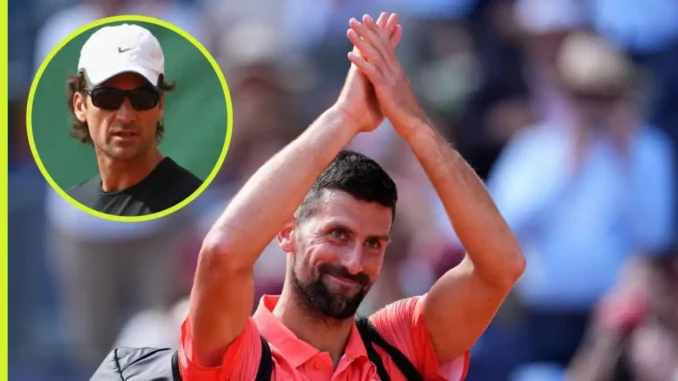
As the 2025 French Open looms on the horizon, set to commence on May 25 at Roland Garros, the tennis world is grappling with an unexpected narrative: Novak Djokovic, the 24-time Grand Slam champion, is mired in an uncharacteristic slump. The Serbian star, long a titan of the sport, has withdrawn from the Italian Open—a tournament he has not missed since his debut in 2007—citing a string of disappointing performances. This marks the second time this year that Djokovic has endured a three-match losing streak, with early exits in four of his last five tournaments. Amid rampant speculation about the reasons behind his downturn, Carlos Moya, Rafael Nadal’s longtime coach, has offered a poignant theory: Djokovic is grappling with a sense of emptiness following a monumental achievement and the absence of his fiercest rivals.
Djokovic’s 2025 season has been a stark departure from his usual dominance. Since his last victory in the Miami Open semifinals over a month ago, he has suffered back-to-back opening-round losses in Monte-Carlo and Madrid, including a defeat to Matteo Arnaldi at the Caja Magica. Reflecting on these setbacks, Djokovic admitted to facing a “new reality” of early tournament exits, a far cry from his record as the only man to win each of the four Grand Slams multiple times. “I have to get used to my new reality,” he said, acknowledging the challenge of adapting to this unfamiliar territory. His decision to skip Rome, a key clay-court event, has raised eyebrows, leaving him poised to enter Roland Garros without a single clay victory in 2025—a precarious position for a player chasing a record-extending 25th Grand Slam title.
Moya, who coached Nadal from 2016 until the Spaniard’s retirement in November 2024, attributes Djokovic’s struggles to a profound emotional void. He suggests two pivotal factors: Djokovic’s crowning achievement at the 2024 Paris Olympics, where he clinched the elusive gold medal, and the retirement of his storied rivals, Roger Federer and Rafael Nadal. “He feels a little empty,” Moya told reporters, explaining that Djokovic “came full circle at the Olympic Games” last summer, securing the one title that had long evaded him. This triumph, while historic, may have left Djokovic searching for new motivation. Compounding this is the absence of Federer, who retired at the 2022 Laver Cup, and Nadal, who bid farewell at the Davis Cup Finals. Their departures have dismantled the ‘Big Three’ era, leaving Djokovic without the competitive fire sparked by their legendary rivalries. “He’s a great in history, and greats should never be ruled out,” Moya added, maintaining optimism about Djokovic’s potential to rebound at Roland Garros.
The Djokovic-Nadal rivalry, spanning 60 professional matches with Djokovic leading 31-29, was a cornerstone of tennis’s golden age. Their battles, including a five-hour epic at the 2018 Wimbledon semifinals and a grueling 2021 French Open semifinal, pushed both players to new heights. Nadal himself credited Djokovic as the best, saying, “The numbers show he’s the best, which means his tennis has also been the best.” Yet, Moya’s insights suggest that the absence of such intense rivalries has left a void in Djokovic’s competitive psyche. The emergence of younger stars like Carlos Alcaraz and Jannik Sinner, while challenging, has not yet replicated the emotional weight of facing Nadal or Federer.
Despite his current form, Moya remains cautious about writing off Djokovic at the French Open, where he has won three titles. The 37-year-old’s resilience is legendary, as evidenced by his ability to overcome a similar dip in 2018 to win Wimbledon. However, his lack of clay-court preparation and the physical toll of a grueling season—highlighted by his retirement in the Australian Open semifinals due to injury—pose significant hurdles. Moya’s perspective is echoed by others in the tennis community, with former players like John McEnroe defending Djokovic’s legacy, saying, “Him and Rafa have dug deeper than any two players I’ve ever seen.”
As Roland Garros approaches, Djokovic faces a critical juncture. Can he reignite the fire that fueled his 24 Grand Slam triumphs, or will the absence of his rivals and the weight of his Olympic achievement continue to cast a shadow? Moya’s analysis offers a glimpse into the complex interplay of motivation and legacy, setting the stage for a compelling narrative at the clay-court Grand Slam.
Leave a Reply